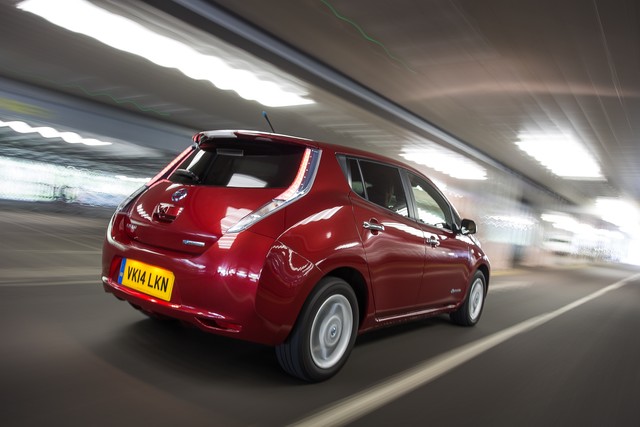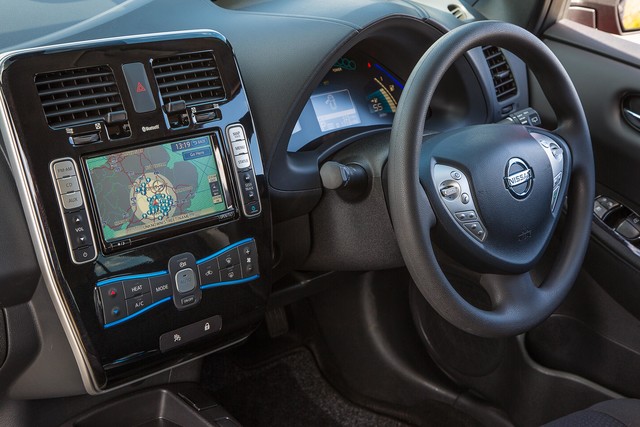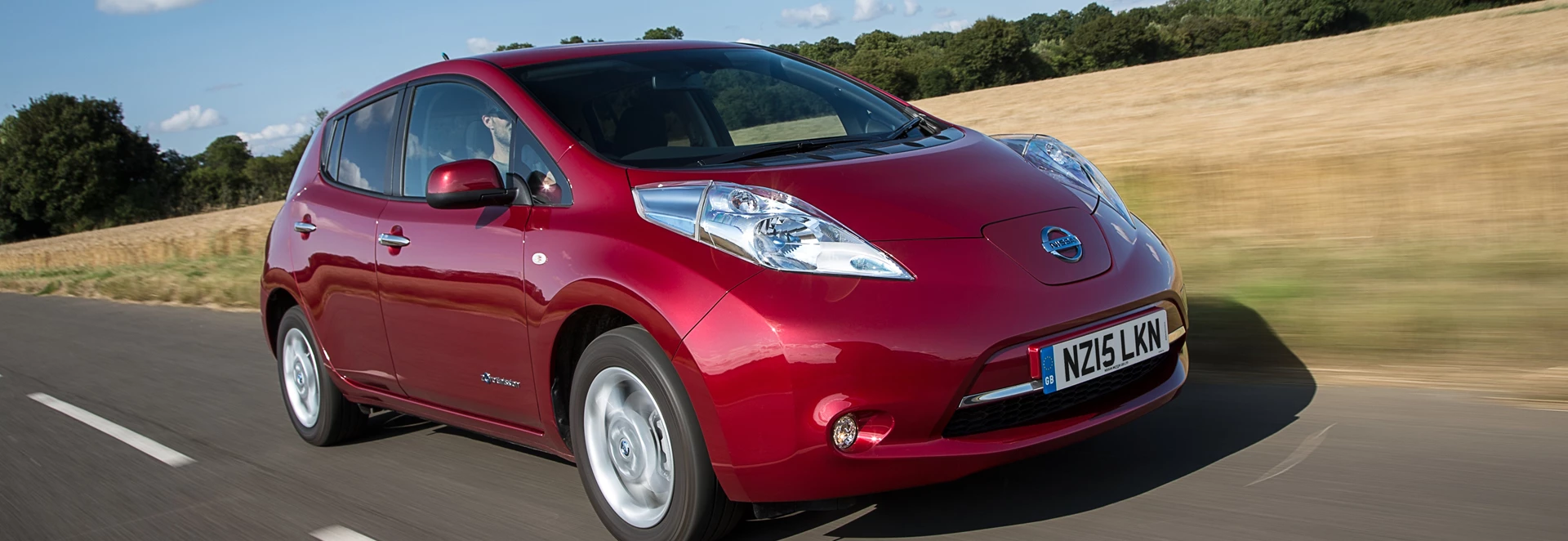The world has moved on in the three and a half years since the Nissan LEAF was launched in the UK. Back then, it was the only all-electric car in its class, and was considered so innovative that it had already won the European Car of the Year award.
Since then, other manufacturers have joined in - Ford and Volkswagen, for example, now produce battery-powered Focuses and Golfs - and the peculiar looks of the LEAF, which seemed fair enough in 2011 considering its outlandish nature, have become more obviously out of place. Well, to me, at least.
On the other hand, it's better than it used to be. In the early days I was disappointed that the LEAF, which has a near-enough 50/50 weight distribution and a similar centre of gravity to the GT-R supercar, nevertheless handled very badly. Nissan did some work on that, and while not exactly inspiring to drive, the revised LEAF is certainly more enjoyable than the original one was.
 Luggage space has also improved now that Nissan has moved the battery charger from the back to the front. Can you imagine the forehead-slapping that went on when someone realised that's where it should have been in the first place? For Visia and Acenta versions it's now 370 litres with the rear seats in place, but in the Tekna tested here is reduced to 355 litres to make way for the standard Bose audio system.
Luggage space has also improved now that Nissan has moved the battery charger from the back to the front. Can you imagine the forehead-slapping that went on when someone realised that's where it should have been in the first place? For Visia and Acenta versions it's now 370 litres with the rear seats in place, but in the Tekna tested here is reduced to 355 litres to make way for the standard Bose audio system.
Both figures are better than the original 330 litres. And the electric Focus and Golf - both converted from existing cars rather than designed this way from scratch as the LEAF was - have considerably smaller boots.
Seats down, the capacity is 912 litres, which isn't so good compared with the opposition. The load sill is high and the tailgate opening is narrow just at the point where you want it to be wide. In the past, you could have countered that no electric rival was better in this respect, because there were no electric rivals at all, but that's no longer the case.
Like all cars of this type, the LEAF is so good in town that you're left wondering why anyone still buys cars with internal combustion engines for this sort of driving. Range anxiety on longer journeys is, of course, inescapable, though there has been an improvement there too: the maximum potential distance achievable on a single charge has risen from 109 miles to 124.
 The Tekna is the best-equipped LEAF there has ever been. In addition to the Bose audio already mentioned, it has leather upholstery, 17-inch alloy wheels (Acentas run on 16s, Visias on steel rims) and the excellent Around View Monitor system which gives a view of the car that appears to be taken from a helicopter flying directly overhead.
The Tekna is the best-equipped LEAF there has ever been. In addition to the Bose audio already mentioned, it has leather upholstery, 17-inch alloy wheels (Acentas run on 16s, Visias on steel rims) and the excellent Around View Monitor system which gives a view of the car that appears to be taken from a helicopter flying directly overhead.
You also get cruise control, a reversing camera, automatic headlights and wipers, folding heated door mirrors, heated seats and steering wheel, foglights, a rapid charging port and Nissan's CARWINGS telematics system.
The whole package costs £25,490 (less than the Focus, about the same as the Golf) after the Government grant for plug-in cars has been applied, and that's about £500 less than you would have been asked to pay for the original, less generously equipped LEAF back in 2011. This may be slow progress, but it's definitely progress.




